Stretching for Climbing: Build the Flexibility Needed for Success
10 May 2025
Climbing is all about strength, technique, and endurance—but if you’re not flexible, you’re leaving a huge gap in your potential. Whether you're reaching for that distant foothold or contorting your body to stick a tricky move, flexibility can be the difference between sending a route and falling short.
A solid stretching routine can improve your mobility, prevent injuries, and make your climbing smoother. Let’s break down everything you need to know about stretching for climbing so you can move with more freedom and confidence on the wall. 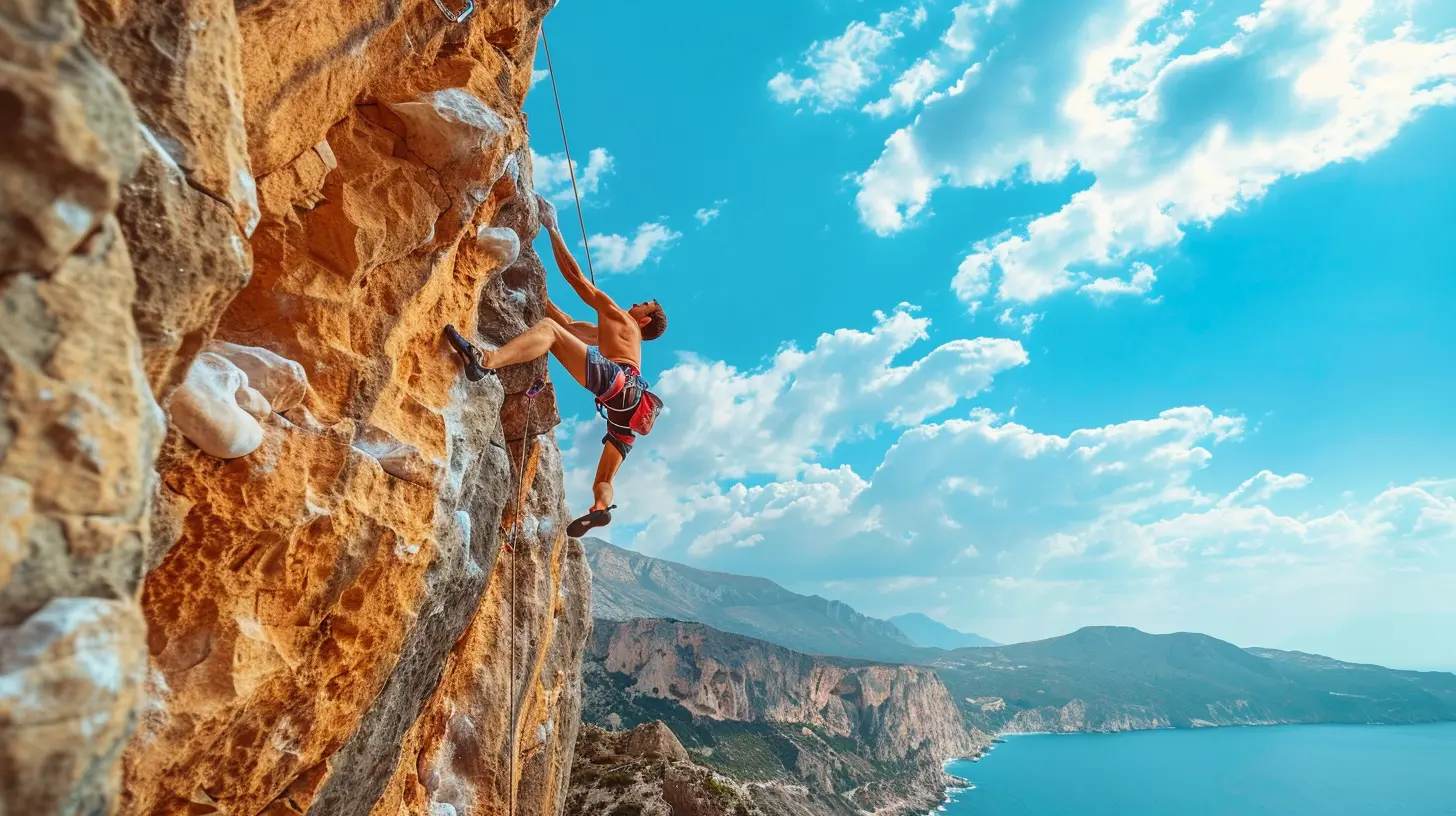
Why Flexibility Is Crucial for Climbing
Imagine trying to climb a route where your body just refuses to move the way you need it to. Limited flexibility can kill your progress, force you into awkward positions, and even lead to injuries.Here’s why stretching is a game-changer for climbers:
- Improved Range of Motion – Helps you reach further and take advantage of tricky holds.
- Better Balance and Control – Allows smoother transitions between moves.
- Injury Prevention – Reduces strain on muscles and joints by increasing mobility.
- Increased Efficiency – Less stiffness means less wasted energy fighting your body’s limitations.
Now that we know why stretching matters, let's dive into the best ways to build flexibility for climbing. 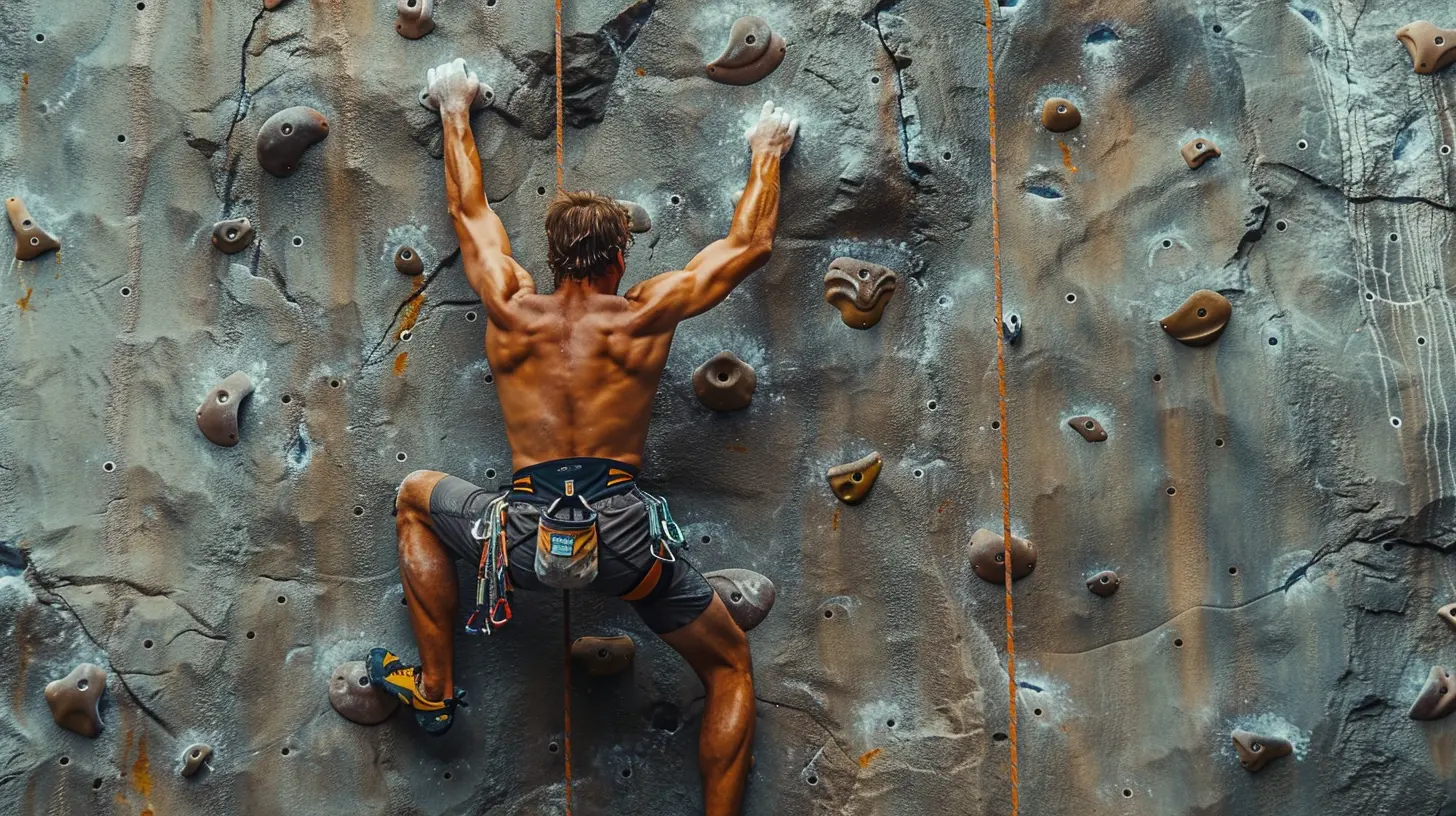
Types of Stretching: What Works Best for Climbers?
Not all stretching is created equal, and if you’re looking to enhance your climbing, you need the right mix of techniques.1. Dynamic Stretching (Before Climbing)
Think of dynamic stretches as your body’s warm-up. These movements help loosen up muscles and joints without forcing them into uncomfortable positions.Great dynamic stretches for climbers include:
- Leg Swings – Swing each leg forward and backward to loosen up your hips.
- Arm Circles – Small and large circles to warm up shoulders.
- Torso Twists – Rotate your torso side to side to activate your core.
- High Knees – Gets your legs moving and blood flowing.
Performing 5-10 minutes of dynamic stretching before climbing can make a big difference in your mobility and performance.
2. Static Stretching (After Climbing)
Once your session is over, it’s time to lengthen those muscles and increase flexibility. Static stretches involve holding a position for an extended period, allowing your muscles to relax and expand.Some of the most beneficial post-climbing stretches include:
- Hip Openers – Like the pigeon pose, which helps with high steps and wide stances.
- Hamstring Stretch – A must for getting your legs high on the wall.
- Shoulder Stretch – Relieves tightness from pulling movements.
- Wrist and Finger Stretches – Crucial for recovery and injury prevention in climbers.
Holding each stretch for 20-30 seconds allows your muscles to fully relax and adapt. 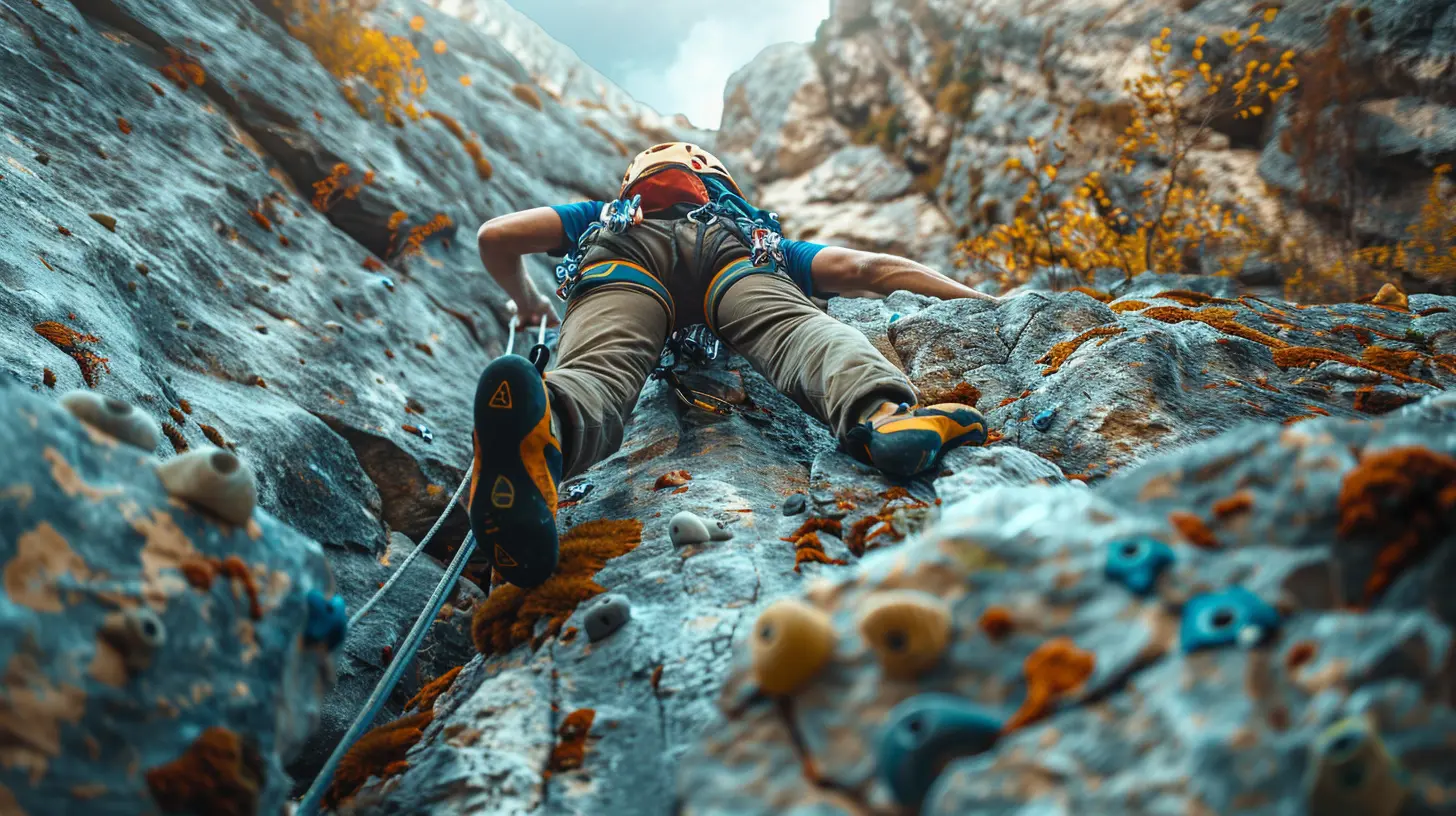
Best Stretches for Climbers
If you want to climb better, these specific stretches should be part of your routine.1. The Pigeon Pose (Hip Flexibility)
Climbers often find themselves in deep hip positions, and tight hips can limit your ability to raise your foot high or pivot gracefully.- Start in a plank position, bring one knee forward, and rest it close to your hands.
- Extend the other leg back and lower your torso forward.
- Hold for 20-30 seconds on each side.
This stretch helps increase mobility in the hips, making high steps and stemming moves easier.
2. Seated Hamstring Stretch
Tight hamstrings can make it hard to extend your legs for those reachy footholds.- Sit on the floor with one leg extended and the other foot resting against your inner thigh.
- Reach forward toward your extended foot, keeping your back straight.
- Hold for 20-30 seconds, then switch sides.
3. Shoulder Stretch (For Better Reach & Stability)
Strong, mobile shoulders are essential for reaching far holds and staying stable on overhung routes.- Extend one arm across your chest and use your other arm to gently pull it closer.
- Hold for 20-30 seconds, then switch arms.
This keeps your shoulders flexible and reduces stiffness after long climbs.
4. Wrist & Finger Stretch
Since climbing puts a lot of stress on your wrists and fingers, keeping them flexible helps prevent injuries.- Extend one arm forward with the palm facing up, and use your other hand to gently press your fingers down.
- Reverse the stretch by pressing your fingers upward.
- Hold each position for 15-20 seconds on both hands. 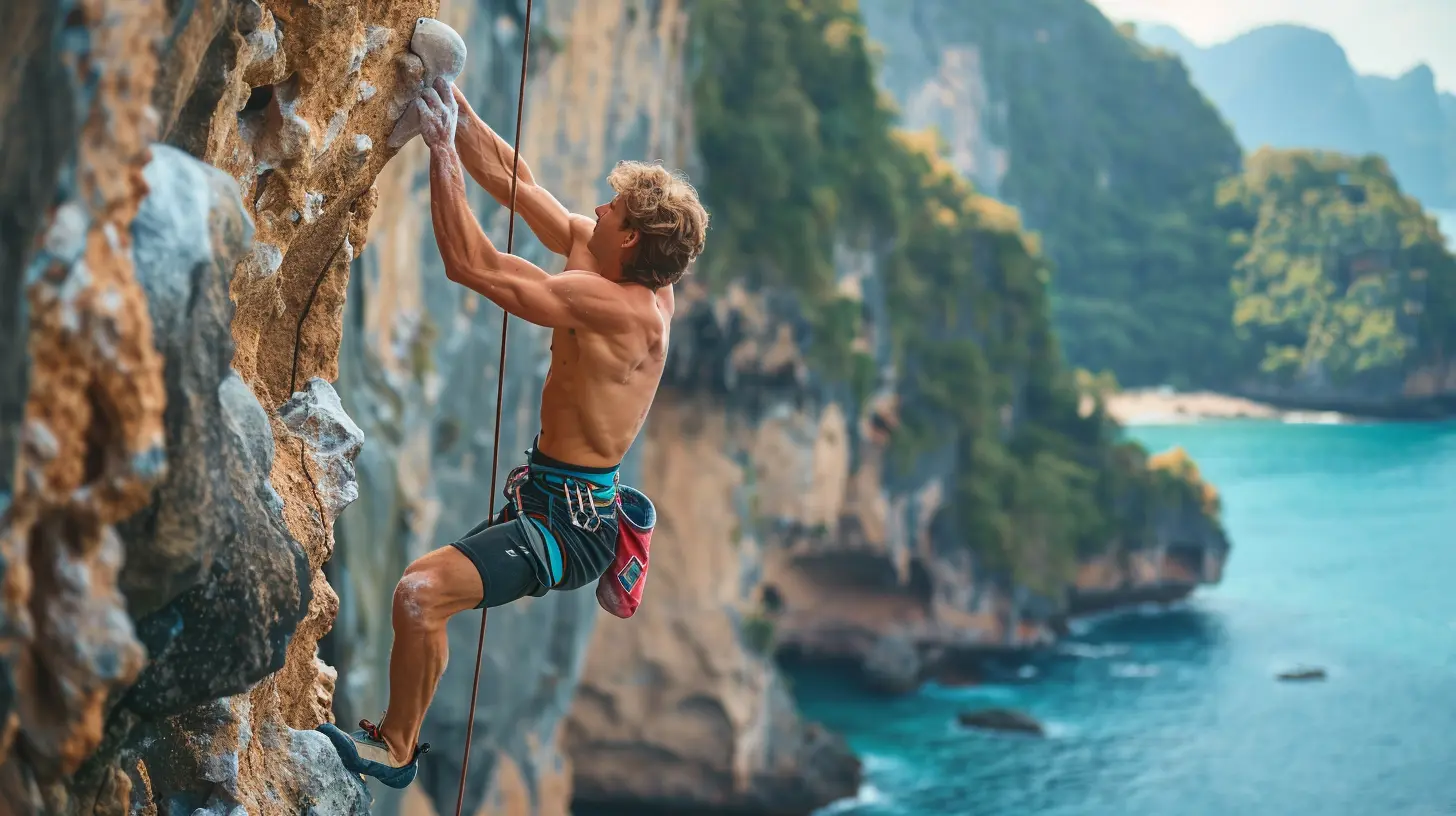
Creating a Climbing-Specific Stretching Routine
To maximize the benefits, consistency is key. Here’s a simple stretching routine you can follow before and after climbing:Pre-Climb Dynamic Warm-Up (5-10 Minutes)
1. Arm Circles – 30 seconds2. Torso Twists – 20 reps
3. Leg Swings – 10 reps per leg
4. Lunges with a Twist – 10 reps per side
Post-Climb Stretching Routine (10-15 Minutes)
1. Pigeon Pose – 30 seconds per side2. Seated Hamstring Stretch – 30 seconds per leg
3. Shoulder Stretch – 30 seconds per side
4. Wrist & Finger Stretch – 20 seconds per hand
Common Stretching Mistakes Climbers Should Avoid
Stretching sounds simple, but a few mistakes can make it less effective or even harmful.1. Skipping the Warm-Up Before Stretching
Stretching cold muscles can lead to strains. Always do light movement (jogging, jumping jacks) before stretching.2. Rushing Through Stretches
Holding a stretch for only a few seconds won’t do much. Aim for at least 20-30 seconds per position.3. Overstretching
If a stretch feels painful, ease up! Stretching should feel like a gentle pull, not sharp pain.4. Ignoring Small Muscle Groups
Climbers often focus on big muscles like legs and shoulders, but don’t forget about wrists, fingers, and forearms!The Bottom Line
Stretching might not be as exciting as climbing, but it’s a crucial tool to improve your performance, prevent injuries, and move with more freedom. Adding even a few minutes of stretching to your routine can unlock better mobility, smoother transitions, and less muscle stiffness.So next time you hit the gym or crag, don’t skip the stretches—your body (and future sends) will thank you for it!
all images in this post were generated using AI tools
Category:
StretchingAuthor:

Nelson Bryant
Discussion
rate this article
5 comments
Gemma Roth
Great article! Proper stretching enhances flexibility, prevents injuries, and improves performance in climbing. Incorporating targeted stretches can significantly boost your ability to conquer tough routes.
May 17, 2025 at 12:11 PM

Nelson Bryant
Thank you! I'm glad you found the article helpful. Targeted stretching really is key for improving climbing performance!
Hope Barker
Great article! I appreciate the emphasis on flexibility for climbing success. Incorporating dynamic stretches before climbing and static stretches afterward can really enhance performance and recovery. Consider adding tips on specific stretches for different climbing techniques—would be super helpful! Keep up the great work!
May 12, 2025 at 4:26 AM

Nelson Bryant
Thank you for your feedback! I appreciate your suggestion and will definitely consider including specific stretch tips for various climbing techniques in future articles. Happy climbing!
Emily Clarke
Great article! Stretching is essential for climbing success. Your tips will definitely help climbers improve flexibility and performance. Excited to implement these techniques in my routine!
May 11, 2025 at 12:54 PM

Nelson Bryant
Thank you! I'm glad you found the tips helpful. Wishing you great success with your climbing routine! Happy stretching!
Owen Schultz
“Stretching for climbing? I thought it was just a fancy way to warm up for ‘Aggressive Rock Hopping’! Remember, flexibility is key—just don’t get so limber you accidentally do the splits while reaching for that next hold. Gravity is not a gentle friend!”
May 11, 2025 at 2:35 AM

Nelson Bryant
Haha, great point! Flexibility definitely helps in climbing, but let's keep the splits for the dance floor! Stay safe and stretch wisely!
Geneva Ellison
Incorporating a consistent stretching routine is essential for climbers. Improved flexibility not only enhances performance but also reduces injury risk. Prioritizing targeted stretches can lead to significant gains in climbing ability and overall physical resilience.
May 10, 2025 at 7:27 PM

Nelson Bryant
Thank you for highlighting the importance of a consistent stretching routine! Flexibility is indeed key to enhancing performance and minimizing injury risk in climbing.
MORE POSTS
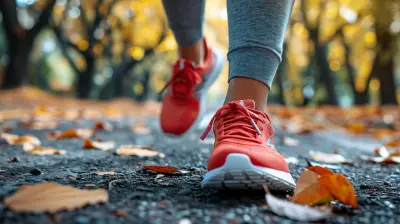
Running and Mental Health: How Hitting the Pavement Can Improve Your Mood

The Ultimate Redemption: Athletes Who Turned Failure Into Triumph

The Role of Sports Psychologists in the Careers of Top Tennis Players

The Importance of Hydration During Marathon Training

Why Some Fans Never Give Up on a Losing Team